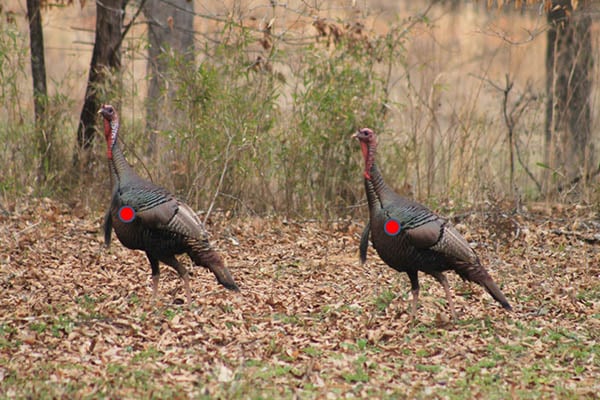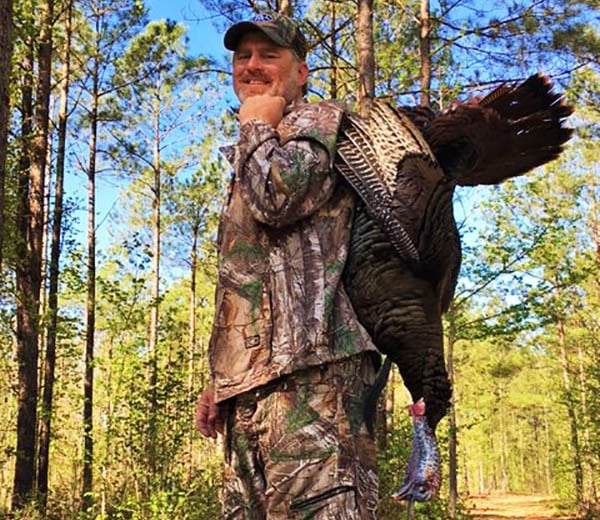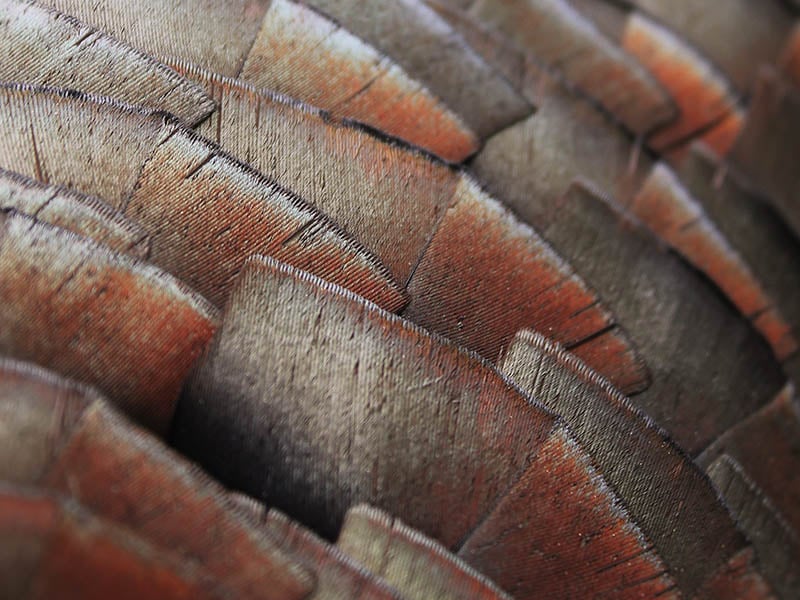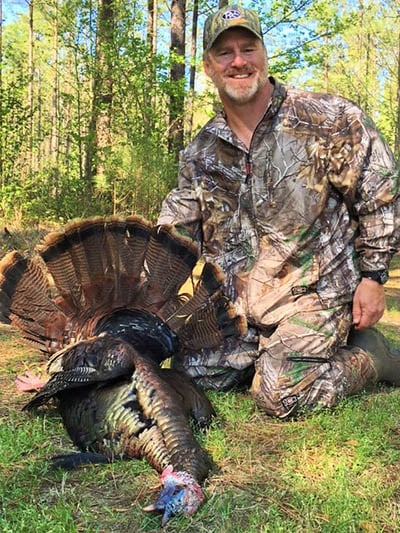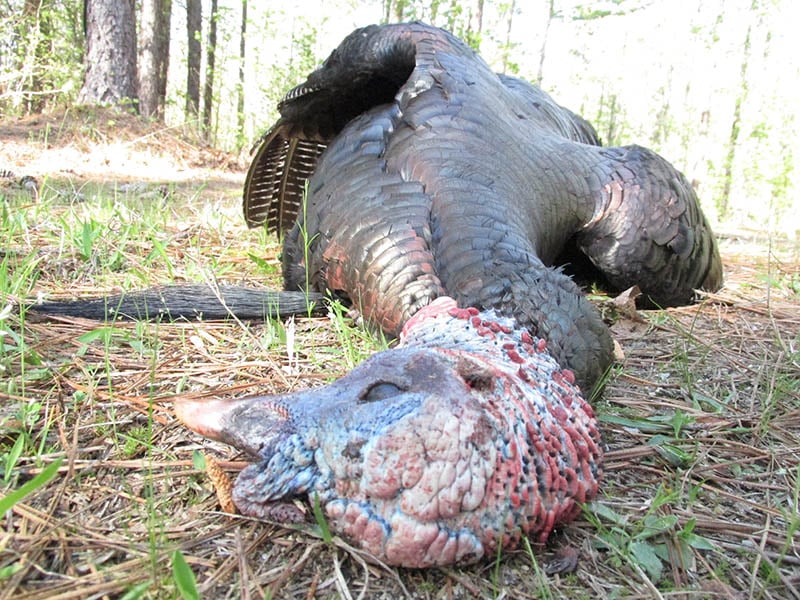Last Updated on
By Pete Rogers
As the popularity of turkey hunting continues to grow, there is a certain segment of hunters that believe for some strange reason, they should up the ante in the turkey’s favor. These hunters have opted to forgo shotguns in favor of archery tackle.
For as long as men have pursued turkeys, they have been hunted with archery gear. From the earliest Americans, to the present day, men and women ply their skill against one of the most formidable foes in the outdoors with stick and string. It is true, that many dedicated bow hunters have been hunting turkeys with archery gear for some time. Others are just now stretching their horizons and leaving the shotgun behind as they grab their bow and a quiver full of arrows.
Turkey Bow Hunting Differences And Gear
Hunting the turkey with your bow is no real science and the same equipment you use for whitetails will suffice in most instances. There are some subtle differences hunters need to consider when hunting turkeys.
One of the primary things to consider that is different from hunting whitetails is the penetration. Whitetail hunters are hoping for a complete pass through of the arrow to expedite blood loss and easy tracking. On the contrary turkey hunters want the arrow to say in the animal to impede escape. To accomplish this, many hunters choose to use a different set up on their bow. By decreasing the poundage, you increase your chances the arrow will not pass through the turkey. (NOTE: there is a relatively new bent towards head shooting turkeys with big broadheads in an attempt to decapitate the birds. We will not be discussing this in this story. It brings up a lot of ethical dilemmas that are not the focus of this particular piece).
Other hunters are getting a completely different bow package that is dedicated for turkey hunting. Personally, I do not shoot heavy poundage on deer, elk or turkey so my typical set up is ideal for turkey. For discussion purposes, anything over 60# is pushing the limit for turkeys and achieving the desired effect. Bows with significantly lower poundage’s are also effective at taking turkeys. Many traditional archers shoot bows of 40# and 45# for game all the time with great results. Just remember not to overdo the poundage when hunting turkeys.
While we are on equipment, the arrows are the same you would use for your bow. Arrows need to match your bow setup and what you are comfortable shooting. Any good carbon or aluminum shaft that you are confident with will get the job done.
The next thing to consider are broadheads. While there are some broadheads marketed for turkeys, I have not tested them all, but I have tried a lot of them. I would suggest that broadheads marketed for turkeys are the same broadheads marketed for deer, elk etc, just in different packaging. Personally, I use mechanical for deer but I prefer a fixed blade for turkeys, such as the Montec by G5 Outdoors. This one piece steel broadhead is lethal on turkeys. It comes in 85, 100, 125 grain configurations respectfully. Other great fixed blade broadheads include the Muzzy four blade, and even some of the two blade styles like a Zwicky or Magnus.
Techniques
Now that we have covered some of the equipment for hunting turkeys with archery gear, let’s get to the techniques. Admittedly most turkeys harvested with archery gear are taken from portable ground blinds. Turkeys for some reason, seem to totally ignore portable ground blinds, and setting up some decoys at 15-20 yards in front of a ground blind in a fairly open area gives the archer a chance to get the turkeys in range and draw their bow undetected. It never ceases to amaze me that the same bird that can detect an eye blink from a hunter at 80 yards completely ignores a five foot square blind in the middle of a field.
When using popup style ground blinds, either set it up a day or so before, or get there an hour before sunrise and get it all set up. You do not want to be setting up the blind as the sun is rising. Make sure you are not facing the rising sun, and place a hen decoy and a strutting Jake decoy 15-20 yards in front of the blind. Some soft calling is needed to get any birds to look in your direction. The point here is to be in a highly visible location where birds can see you from a very long way.
Once the birds see your decoys and commit to coming in, call as little as possible, some simple purrs, very soft clucks is it. The tom is keyed in on the Jake and hen, so over-calling can spook him. I recommend using very life like decoys for this set up. DVD decoys, and Avian X are some of the most realistic. A fan also works well in this situation.
For turkey hunters who like chasing birds and calling birds, the popup blind set up leaves you somewhat empty. Hunting turkeys is about the chase, and more times than not, you have to move some to get turkeys.
This is my preferred method. When hunting with archery gear, I use the same techniques I use when hunting with firearms. This is where a short axle to axle bow comes into play. I shoot a Prime Shift, with its 30” axle to axle length. I can easily draw this bow while sitting flat on the ground with plenty of ground clearance. The maximum length will vary depending on your stature. But a good rule of thumb is anything over 32” is pushing it when it comes to drawing while sitting flat on the ground.
As with all archery hunting, knowing when to draw will make or break your opportunity. This is also where the lower draw weight comes into play. Using a lighter draw weight allows me to draw the bow almost effortlessly with a straight smooth motion that is absent of extra movement. As soon as a turkey presents an opportunity, (similarly to when you would raise your gun) I draw the bow, and prepare for the shot. Sometimes the shot presents itself immediately and other times I have to hold the bow for a very long time, but this is all part of turkey hunting.
Shot placement with turkeys as with all game is critical. Most archers agree that only heart shots will anchor your bird. This means, if the bird is facing you, the kill shot is at the point where the beard emerges from his chest. Broadside, the aim point is at the wing joint, for rearward facing birds, the aim point is right through the center of the body. While some archers prefer this shot, since a strutting birds fan hides your drawing the bow, personally, I prefer the other options. Seldom has a turkey shot facing me or been broadside ever left the spot of impact.
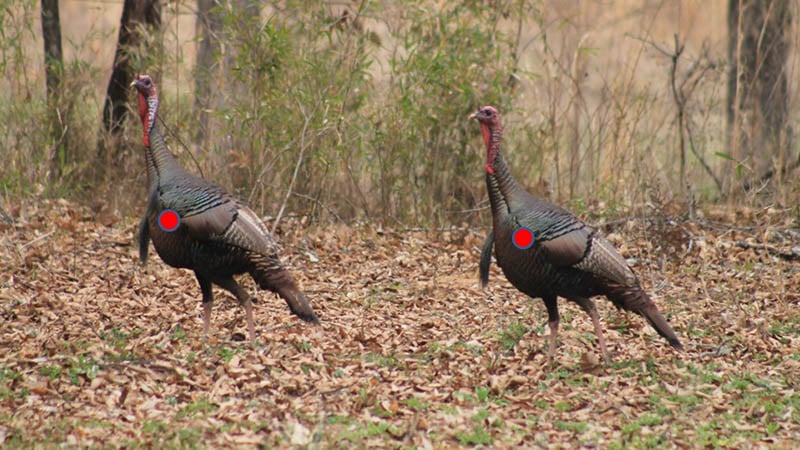
Hunting and killing turkeys is one of the greatest feats in North American hunting. Doing so with archery equipment magnifies the accomplishment. If you haven’t had the chance to chase birds with archery gear, this is a great year to get after them.
